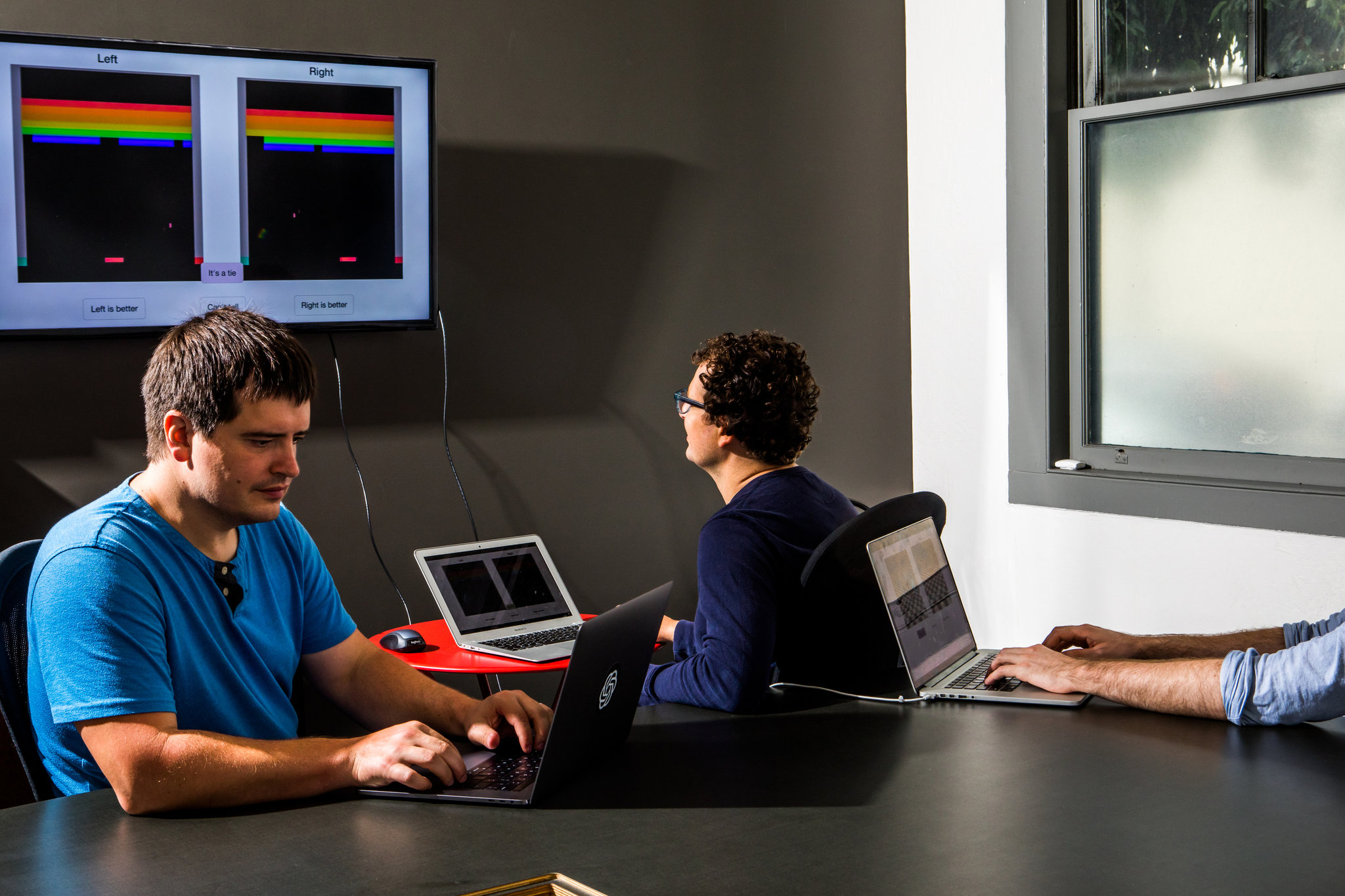At OpenAI , the artificial intelligence lab founded by Tesla ’s chief executive, Elon Musk, machines are teaching themselves to behave like humans. But sometimes, this goes wrong.
copyright by www.nytimes.com
 Sitting inside OpenAI’s San Francisco offices on a recent afternoon, the researcher Dario Amodei showed off an autonomous system that taught itself to play Coast Runners, an old boat-racing video game. The winner is the boat with the most points that also crosses the finish line. The result was surprising: The boat was far too interested in the little green widgets that popped up on the screen. Catching these widgets meant scoring points. Rather than trying to finish the race, the boat went point-crazy. It drove in endless circles, colliding with other vessels, skidding into stone walls and repeatedly catching fire.
Sitting inside OpenAI’s San Francisco offices on a recent afternoon, the researcher Dario Amodei showed off an autonomous system that taught itself to play Coast Runners, an old boat-racing video game. The winner is the boat with the most points that also crosses the finish line. The result was surprising: The boat was far too interested in the little green widgets that popped up on the screen. Catching these widgets meant scoring points. Rather than trying to finish the race, the boat went point-crazy. It drove in endless circles, colliding with other vessels, skidding into stone walls and repeatedly catching fire.
Completely unsupervised they learn all behavior
Mr. Amodei’s burning boat demonstrated the risks of the A.I. techniques that are rapidly remaking the tech world. Researchers are building machines that can learn tasks largely on their own. This is how Google’s DeepMind lab created a system that could beat the world’s best player at the ancient game of Go . But as these machines train themselves through hours of data analysis, they may also find their way to unexpected, unwanted and perhaps even harmful behavior.
Having a human teacher
That’s a concern as these techniques move into online services, security devices and robotics. Now, a small community of A.I. researchers, including Mr. Amodei, is beginning to explore mathematical techniques that aim to keep the worst from happening. At OpenAI, Mr. Amodei and his colleague Paul Christiano are developing algorithms that can not only learn tasks through hours of trial and error, but also receive regular guidance from human teachers along the way. With a few clicks here and there, the researchers now have a way of showing the autonomous system that it needs to win points in Coast Runners while also moving toward the finish line. They believe that these kinds of algorithms — a blend of human and machine instruction — can help keep automated systems safe. Researchers like Mr. Amodei are trying to get ahead of the risks in AI. In some ways, what these scientists are doing is a bit like a parent teaching a child right from wrong. […]
read more – copyright by www.nytimes.com


At OpenAI , the artificial intelligence lab founded by Tesla ’s chief executive, Elon Musk, machines are teaching themselves to behave like humans. But sometimes, this goes wrong.
copyright by www.nytimes.com
Completely unsupervised they learn all behavior
Mr. Amodei’s burning boat demonstrated the risks of the A.I. techniques that are rapidly remaking the tech world. Researchers are building machines that can learn tasks largely on their own. This is how Google’s DeepMind lab created a system that could beat the world’s best player at the ancient game of Go . But as these machines train themselves through hours of data analysis, they may also find their way to unexpected, unwanted and perhaps even harmful behavior.
Having a human teacher
That’s a concern as these techniques move into online services, security devices and robotics. Now, a small community of A.I. researchers, including Mr. Amodei, is beginning to explore mathematical techniques that aim to keep the worst from happening. At OpenAI, Mr. Amodei and his colleague Paul Christiano are developing algorithms that can not only learn tasks through hours of trial and error, but also receive regular guidance from human teachers along the way. With a few clicks here and there, the researchers now have a way of showing the autonomous system that it needs to win points in Coast Runners while also moving toward the finish line. They believe that these kinds of algorithms — a blend of human and machine instruction — can help keep automated systems safe. Researchers like Mr. Amodei are trying to get ahead of the risks in AI. In some ways, what these scientists are doing is a bit like a parent teaching a child right from wrong. […]
read more – copyright by www.nytimes.com
Share this: